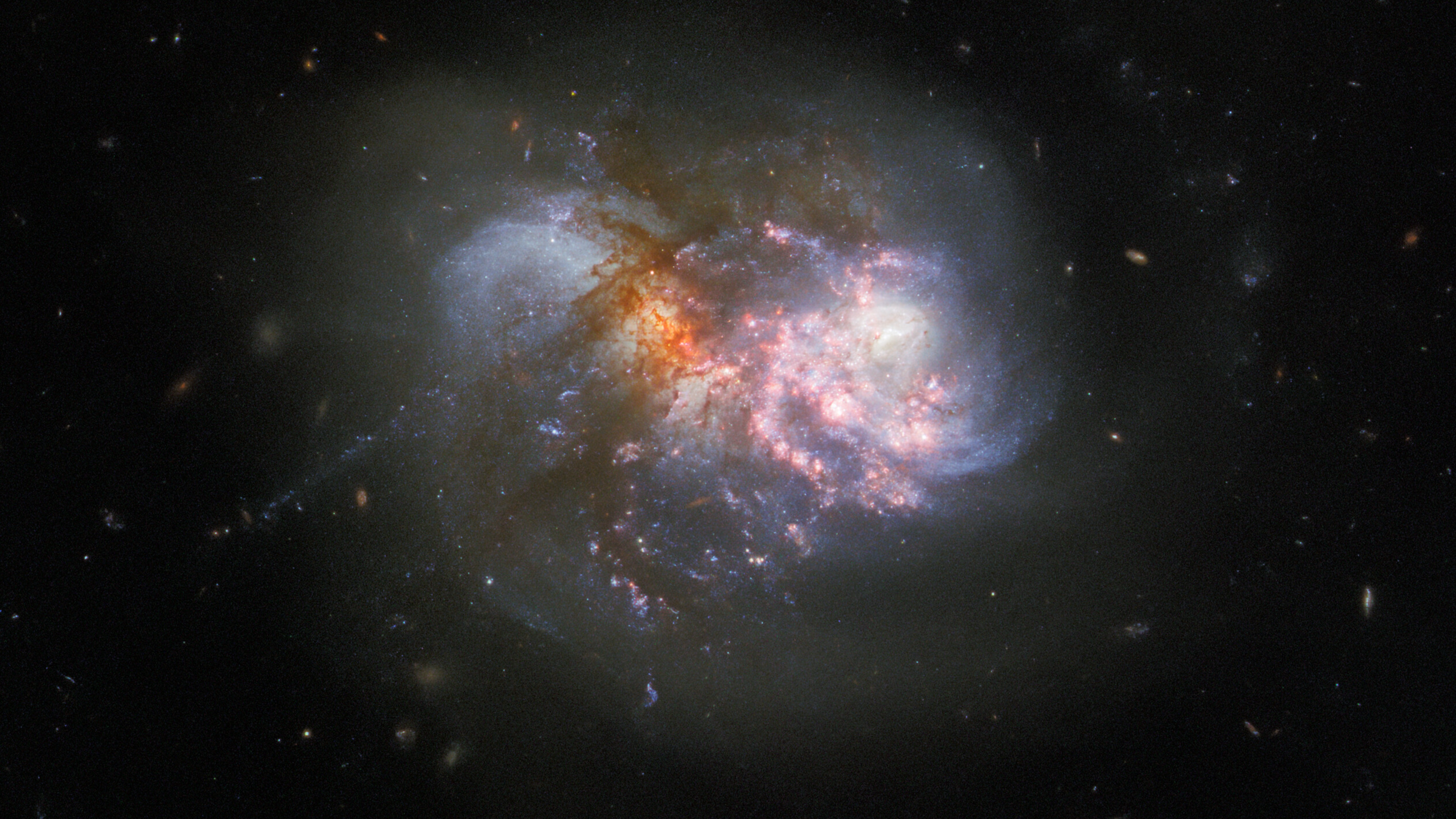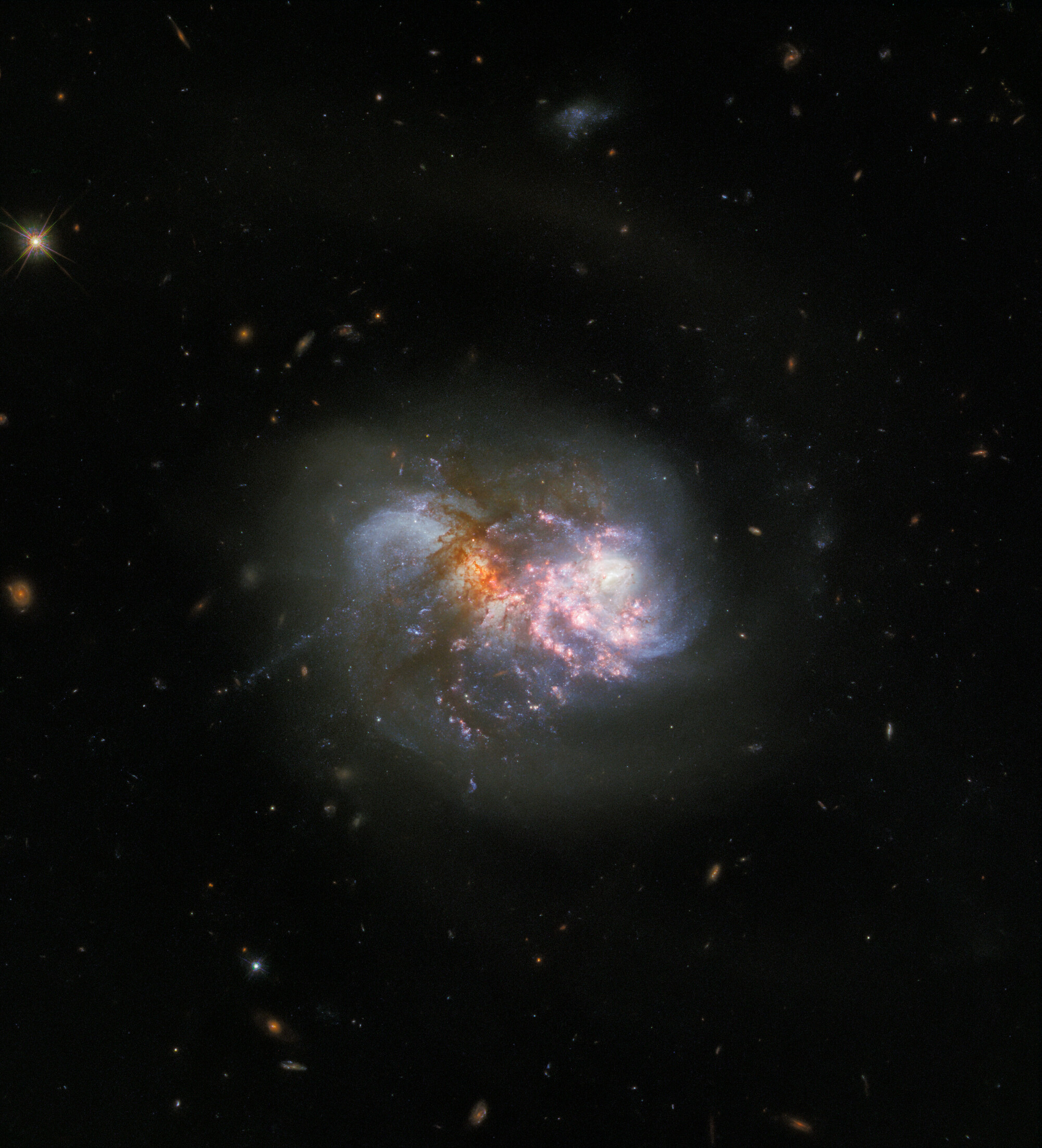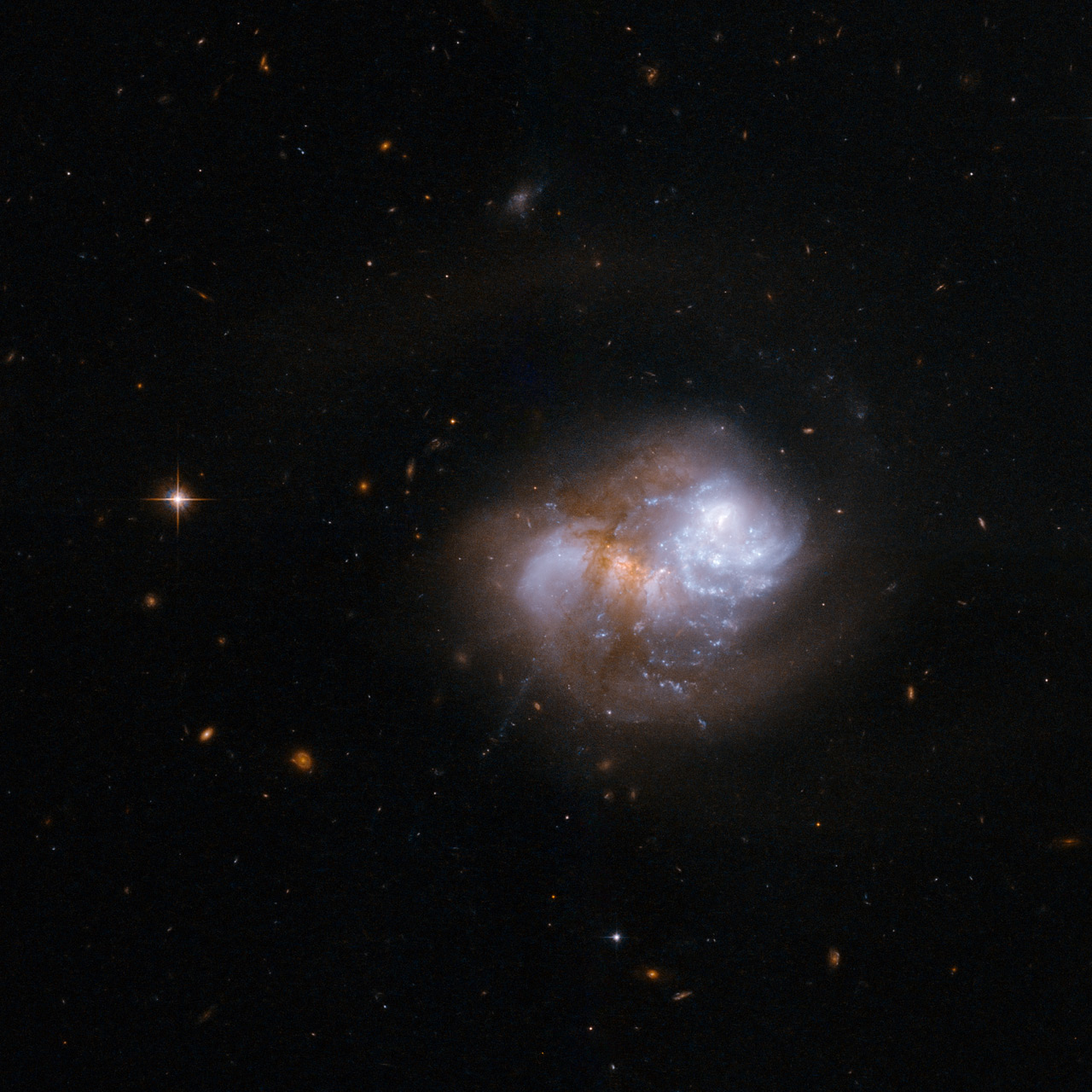
Amid the calamitous flurry of two galaxies smashing together, there is beauty.
The Hubble Space Telescope captured IC 1623, which is known as an “interacting galaxy system,” giving us a new glimpse at what two titanic space objects colliding looks like. These spiral galaxies, roughly 275 million light-years away from Earth, are in the late stages of their merge.

Credit: ESA/Hubble & NASA, R. Chandar
The image, shared by NASA and the European Space Agency (ESA), is a compilation of Hubble observations made using eight filters.
In 2008, a previous observation of IC 1623 shows a similar sight, but uses only two filters, capturing visible and infrared light. This observation was taken before Hubble’s Wide Field Camera 3 was installed in 2009 and appears a bit muted, comparatively.

Credit: ESA
The ESA said the James Webb Space Telescope, which is expected to launch in late 2021, will reveal even more details of this cosmic collision, allowing scientists to get a better understanding of what happens in these events.
Experts believe that as these two galaxies merge, there will be a violent inflow of gas, which will collide and condense into a starburst galaxy. Starburst galaxies are characterized by their intense rate of star production.
NASA noted in 2008 that IC 1623 would likely evolve into something similar to Arp 220, another interacting galaxy composed of what were once two spiral galaxies.

Credit: NASA, ESA , THE HUBBLE, HERITAGE TEAM (STSCL/AURA)-ESA/HUBBLE COLLABORATION AND A. EVANS (UNIVERSITY OF VIRGINIA, CHARLOTTESVILLE/NRAO/STONY BROOK UNIVERSITY)
If you’re into galaxy collisions, a collection of 59 such observations was released in 2008 for your enjoyment.







